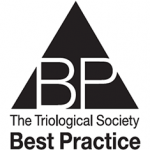Many patients who would likely benefit from implantation are never referred due to poor regional access, and, perhaps most importantly, lack of established CIE referral guidelines.


Many patients who would likely benefit from implantation are never referred due to poor regional access, and, perhaps most importantly, lack of established CIE referral guidelines.

Sterotactic radiosurgery (SRS) for the treatment of VS can be associated with increased balance symptoms, often within the first six months after treatment.

The role and timing of routine bedside layngoscopy following thyroidectomy remain controversial.

Existing evidence suggests that olfactory training is a low-risk intervention that provides clinically relevant and sustained benefit in some PISL patients.

An array of complications may arise after a pediatric tracheotomy, and the clinician should be mindful of advanced-stage pressure injuries.

There is no meaningful advantage to justify using tranexamic acid as a best practice measure in rhytidectomy.

Cost-effectiveness varies between adults and children.

There is evidence that steroid use may be beneficial to improve hearing preservation.

Betahistine is widely used in Europe and the rest of the world in the treatment of Ménière’s disease.

Radiofrequency ablation for benign thyroid nodule has recently gained traction among otolaryngologists for patients seeking a nonsurgical treatment option.